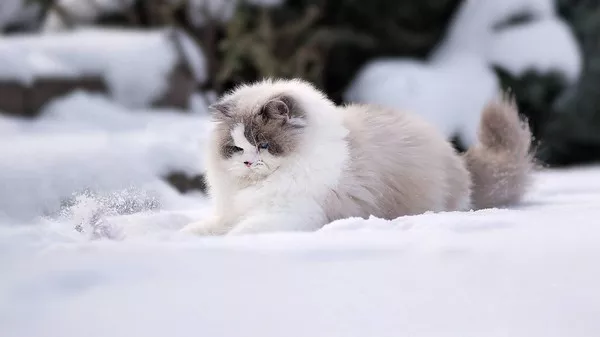The Cornish Rex is a unique breed of cat known for its distinct appearance, including its curly coat and slender body. Among the various factors that enthusiasts and potential owners consider when selecting a Cornish Rex is their size, particularly for male cats. Understanding the growth patterns and size potential of male Cornish Rex cats is essential for breeders, owners, and anyone interested in this fascinating feline breed.
Origins and Characteristics of the Cornish Rex Breed
Before delving into the growth patterns of male Cornish Rex cats, it’s crucial to understand the breed’s origins and characteristics. The Cornish Rex breed originated in Cornwall, England, in the 1950s when a kitten named Kallibunker was born with a unique curly coat. Breeders recognized the potential of this genetic mutation and selectively bred cats to establish the Cornish Rex breed.
Cornish Rex cats are distinguished by their short, curly fur, which lacks the outer coat of guard hairs found in most cat breeds. Instead, their coats consist of soft, downy hair that lies close to the skin, giving them a unique and distinctive appearance. In addition to their curly coats, Cornish Rex cats are known for their slender bodies, large ears, and expressive eyes.
Understanding Growth Patterns in Male Cornish Rex Cats
Like all cats, male Cornish Rex kittens undergo a period of rapid growth and development during their first year of life. However, due to the breed’s unique genetics and characteristics, their growth patterns may differ from those of other breeds.
The Growth Stages of Male Cornish Rex Cats
Neonatal Stage (0-2 weeks): During the neonatal stage, male Cornish Rex kittens are entirely dependent on their mother for nourishment and care. They are born with their eyes closed and are unable to regulate their body temperature, relying on their mother and littermates for warmth.
Transitional Stage (2-4 weeks): As male Cornish Rex kittens enter the transitional stage, they begin to open their eyes and ears, gaining more awareness of their surroundings. They also start to develop their coordination and mobility, gradually becoming more active and playful.
Socialization Stage (4-12 weeks): The socialization stage is a critical period for male Cornish Rex kittens, during which they learn important social skills and behaviors from their mother and littermates. They begin to explore their environment more confidently and interact with humans and other animals, laying the foundation for their future personalities.
See Also:All You Need to Know About Snowshoe Cornish Rex
Juvenile Stage (3-6 months): During the juvenile stage, male Cornish Rex kittens experience a significant growth spurt as they continue to develop physically and mentally. Their bodies become more proportionate, and their muscles and bones strengthen, contributing to their sleek and slender appearance.
Adolescent Stage (6-12 months): By the time male Cornish Rex kittens reach adolescence, they are approaching their adult size and weight. While their growth rate may slow compared to the earlier stages, they continue to mature both physically and behaviorally, becoming more independent and confident.
Factors Influencing the Size of Male Cornish Rex Cats
Several factors can influence the size of male Cornish Rex cats, including genetics, nutrition, and environmental factors.
Genetics: The size of a male Cornish Rex cat is largely determined by its genetics, including the size of its parents and ancestors. Breeders carefully select breeding pairs to produce kittens with desirable characteristics, including size and body conformation.
Nutrition: Proper nutrition is essential for supporting healthy growth and development in male Cornish Rex kittens. A balanced diet that provides adequate protein, vitamins, and minerals is crucial for promoting optimal growth and maintaining overall health.
Environmental Factors: Environmental factors, such as living conditions and access to space for exercise and play, can also impact the size and development of male Cornish Rex cats. A stimulating environment that encourages physical activity and mental stimulation can contribute to a cat’s overall health and well-being.
Understanding Growth Variability in Male Cornish Rex Cats
It’s important to note that there can be variability in the size and growth patterns of male Cornish Rex cats, even within the same litter. While breed standards provide guidelines for size and conformation, individual cats may deviate from these standards based on factors such as genetics and environmental influences.
Additionally, factors such as neutering or spaying can also affect a male Cornish Rex cat’s growth and development. Neutering or spaying at an early age may result in slower growth and a smaller adult size compared to intact cats.
Conclusion
Male Cornish Rex cats are known for their unique appearance and distinctive curly coats. Understanding the growth patterns and size potential of male Cornish Rex cats is essential for breeders, owners, and anyone interested in this fascinating feline breed.
While male Cornish Rex kittens undergo typical growth stages, their size and development can be influenced by factors such as genetics, nutrition, and environmental factors. By providing proper care, nutrition, and a stimulating environment, owners can help male Cornish Rex cats reach their full potential and lead happy, healthy lives.
In conclusion, male Cornish Rex cats may vary in size and growth patterns, but they all share the same playful and affectionate nature that endears them to cat lovers around the world.
Related Topics:

























